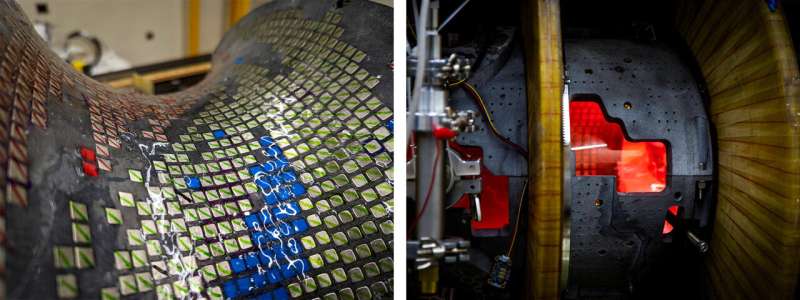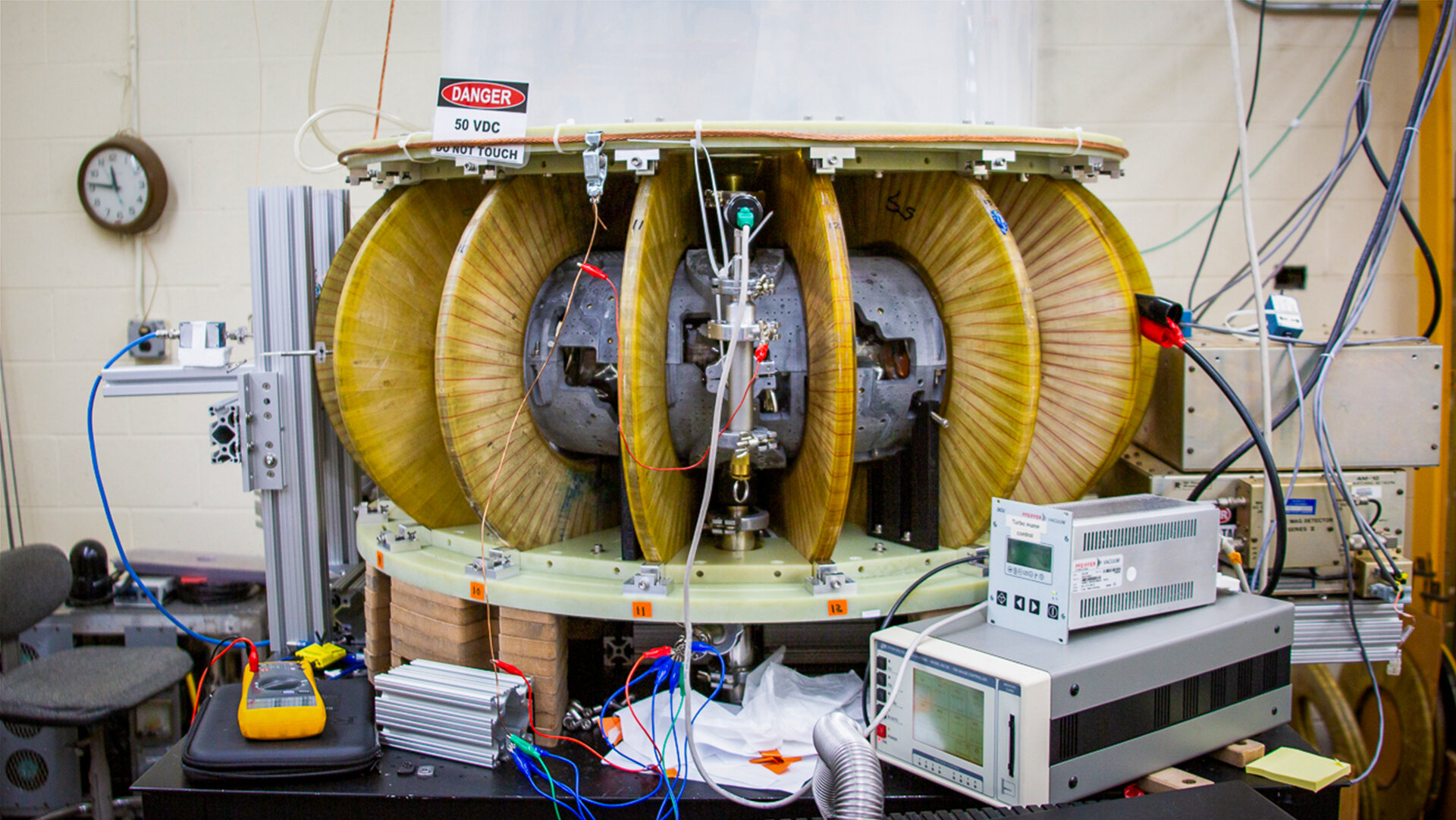For the first time, scientists have built a fusion experiment using permanent magnets, a technique that could show a simple way to build future devices for less cost and allow researchers to test new concepts for future fusion power plants.
Researchers at the U.S. Department of Energy’s (DOE) Princeton Plasma Physics Laboratory (PPPL) combined decades of expertise in engineering, computation and theoretical physics to design a new type of stellarator, a twisty machine that confines plasma, the electrically charged fourth state of matter, to harness the fusion process that powers the sun and stars and potentially generate clean electricity.
“Using permanent magnets is a completely new way to design stellarators,” said Tony Qian, a graduate student in the Princeton Program in Plasma Physics, which is based at PPPL. Qian was the lead author of papers published in the Journal of Plasma Physics and Nuclear Fusion that detail the theory and engineering behind the device, known as MUSE. “This technique allows us to test new plasma confinement ideas quickly and build new devices easily.”
Stellarators typically rely on complicated electromagnets that have complex shapes and create their magnetic fields through the flow of electricity. Those electromagnets must be built precisely with very little room for error, increasing their cost.
However, permanent magnets, like the magnets that hold art to refrigerator doors, do not need electric currents to create their fields. They can also be ordered off the shelf from industrial suppliers and then embedded in a 3D-printed shell around the device’s vacuum vessel, which holds the plasma.
“MUSE is largely constructed with commercially available parts,” said Michael Zarnstorff, a senior research physicist at PPPL and principal investigator of the project. “By working with 3D-printing companies and magnet suppliers, we can shop around and buy the precision we need instead of making it ourselves.”
The original insight that permanent magnets could be the foundation for a new, more affordable stellarator variety came to Zarnstorff in 2014. “I realized that even if they were situated alongside other magnets, rare-earth permanent magnets could generate and maintain the magnetic fields necessary to confine the plasma so fusion reactions can occur,” Zarnstorff said, “and that’s the property that makes this technique work.”

Solving a long-standing engineering problem
Invented more than 70 years ago by PPPL founder Lyman Spitzer, stellarators are only one concept for fusion facilities. Another is the doughnut-shaped or cored-apple-shaped tokamak, like PPPL’s National Spherical Torus Experiment-Upgrade, which confines plasma using relatively simple magnets. For decades, this has been the preferred design for scientists around the world because of how well the devices confine plasma.
However, tokamaks also rely on magnetic fields created by electric currents running through the middle of the plasma, which create instabilities that interfere with the fusion reactions. Stellarators can operate without such currents, though, and therefore can run for indefinite periods of time. But their complicated magnets, which are hard to design and build, have for years meant that stellarators were not economic or practical options for fusion power plants.
That is why MUSE’s success in demonstrating that stellarators can operate using simple magnets is so important. “Typical stellarator magnets are very difficult to machine because you have to do so very precisely,” said Amelia Chambliss, a graduate student in Columbia University’s Department of Applied Physics and Applied Mathematics who helped design MUSE during a DOE Science Undergraduate Laboratory Internship at PPPL a few years ago. “So, the idea that we can use lots of discrete magnets to do the job instead is very exciting. It’s a much easier engineering problem.”
Realizing a theoretical property
In addition to being an engineering breakthrough, MUSE also exhibits a theoretical property known as quasisymmetry to a higher degree than any other stellarator has before. It is also the first device completed anywhere in the world that was designed specifically to have a type of quasisymmetry known as quasiaxisymmetry.
Conceived by physicist Allen Boozer at PPPL in the early 1980s, quasisymmetry means that although the shape of the magnetic field inside the stellarator may not be the same around the physical shape of the stellarator, the magnetic field’s strength is uniform around the device, leading to good plasma confinement and higher likelihood that fusion reactions will occur. “In fact, MUSE’s quasisymmetry optimization is at least 100 times better than any existing stellarator,” Zarnstorff said.
“The fact that we were able to design and build this stellarator is a real achievement,” Qian said.
In the future, the PPPL team plans to run a series of experiments to determine the exact nature of MUSE’s quasisymmetry and thus figure out how well the device prevents hot particles from moving from the core of the plasma to the edge, making fusion reactions more difficult. The methods will include mapping the magnetic fields more precisely and measuring how the spinning plasma slows down, which depends on the device’s quasisymmetry.
MUSE demonstrates the type of innovation possible at a U.S. national laboratory. “To me, the most important thing about MUSE is that it represents a creative way to solve a difficult problem,” Chambliss said. “It uses lots of open-minded and innovative approaches to solve long-standing stellarator problems. As long as the community continues to think in this flexible way, we’ll be in good shape.”
More information:
T.M. Qian et al, Design and construction of the MUSE permanent magnet stellarator, Journal of Plasma Physics (2023). DOI: 10.1017/S0022377823000880
T. Qian et al, Simpler optimized stellarators using permanent magnets, Nuclear Fusion (2022). DOI: 10.1088/1741-4326/ac6c99
Citation:
A return to roots: Lab builds its first stellarator in 50 years and opens the door for research into new plasma physics (2024, April 2)
retrieved 2 April 2024
from https://phys.org/news/2024-04-roots-lab-stellarator-years-door.html
This document is subject to copyright. Apart from any fair dealing for the purpose of private study or research, no
part may be reproduced without the written permission. The content is provided for information purposes only.


